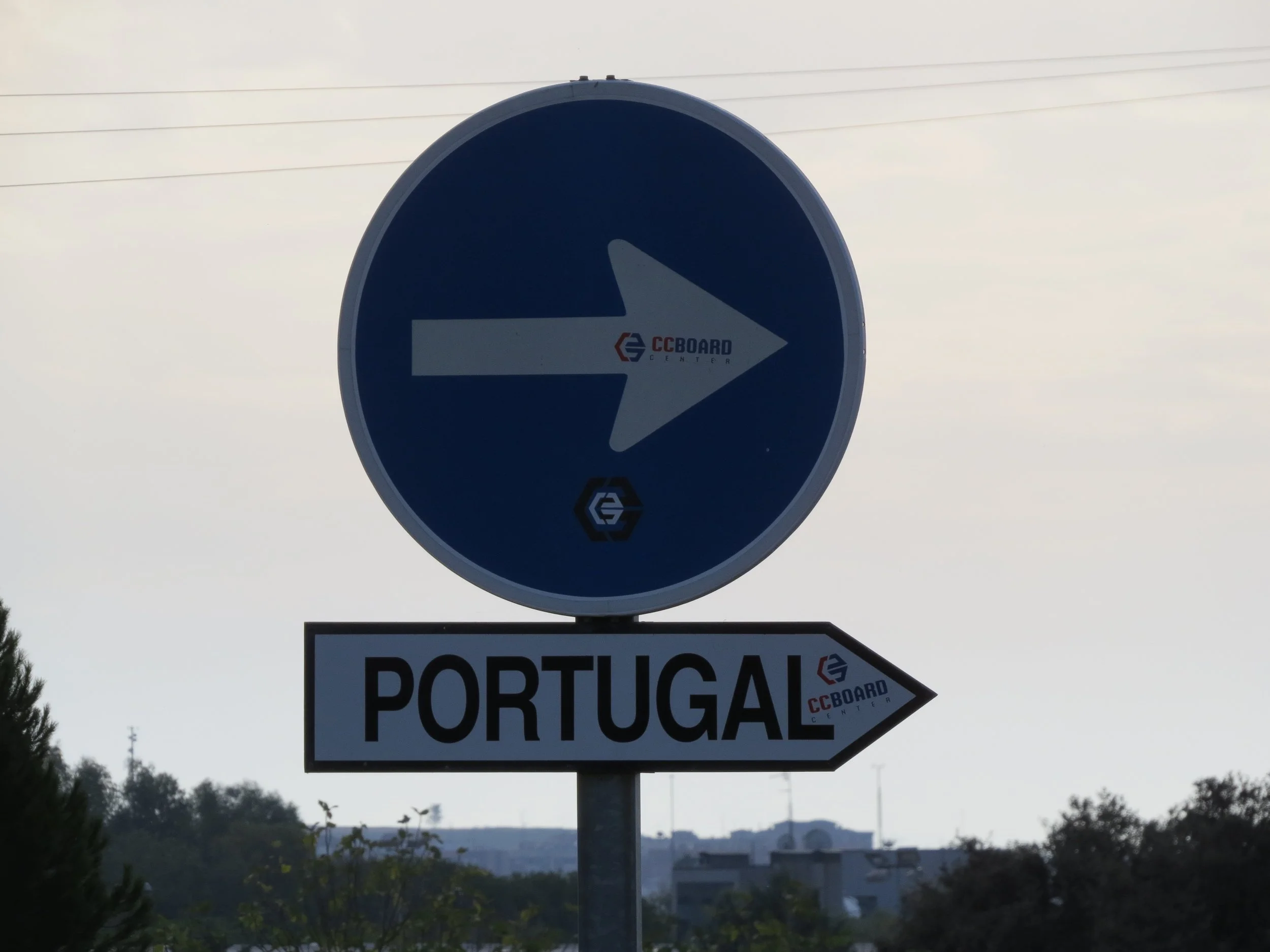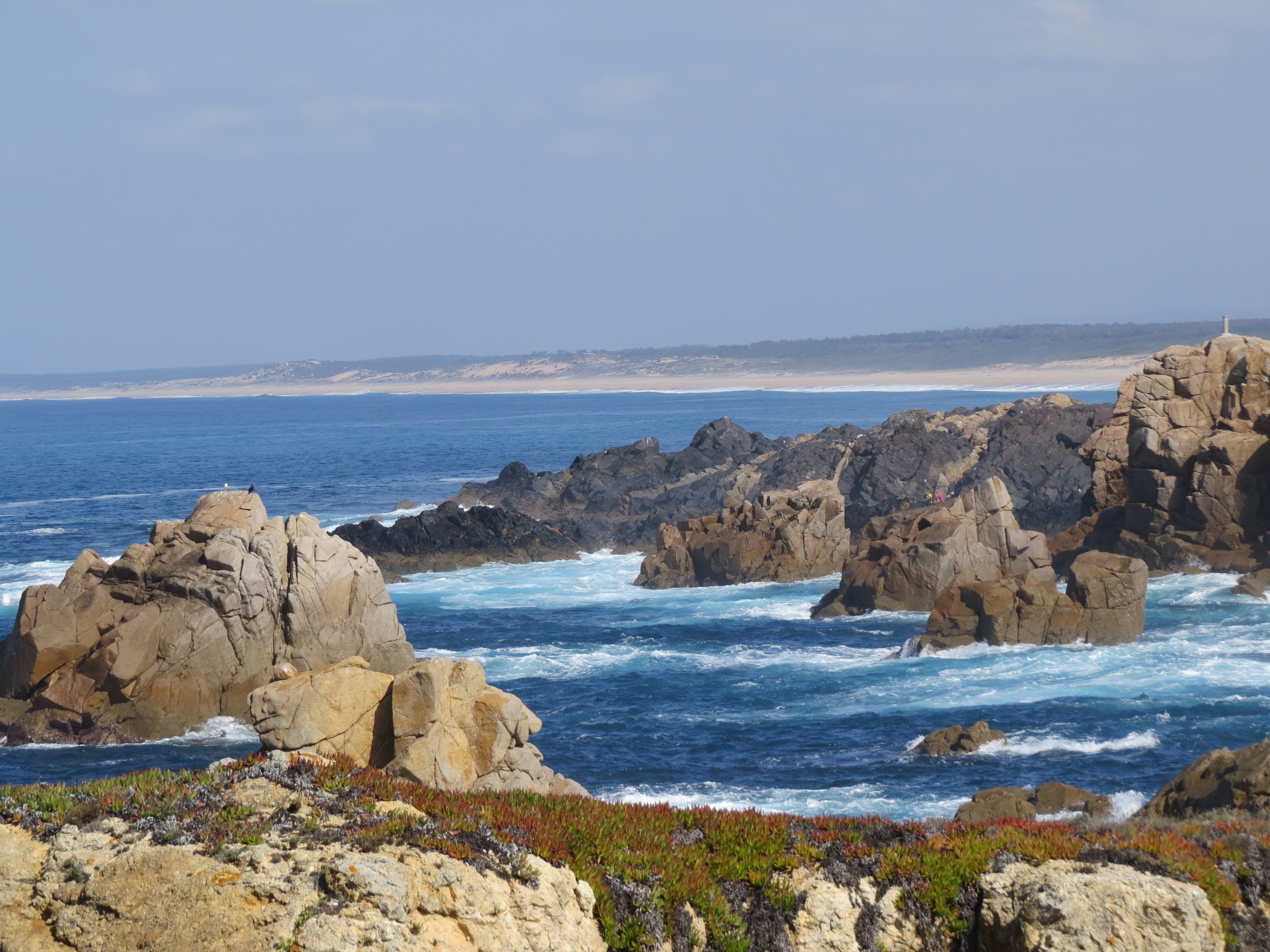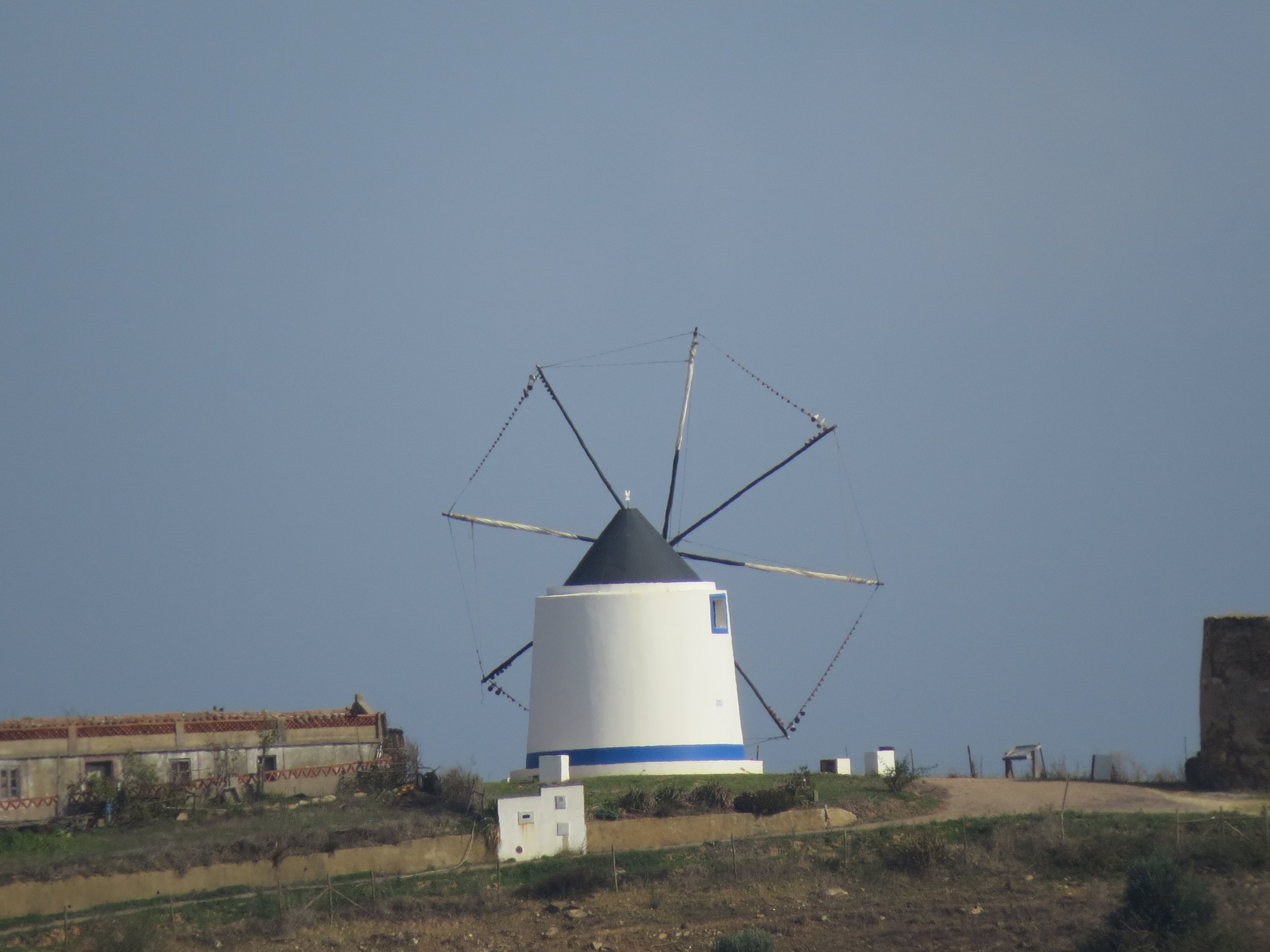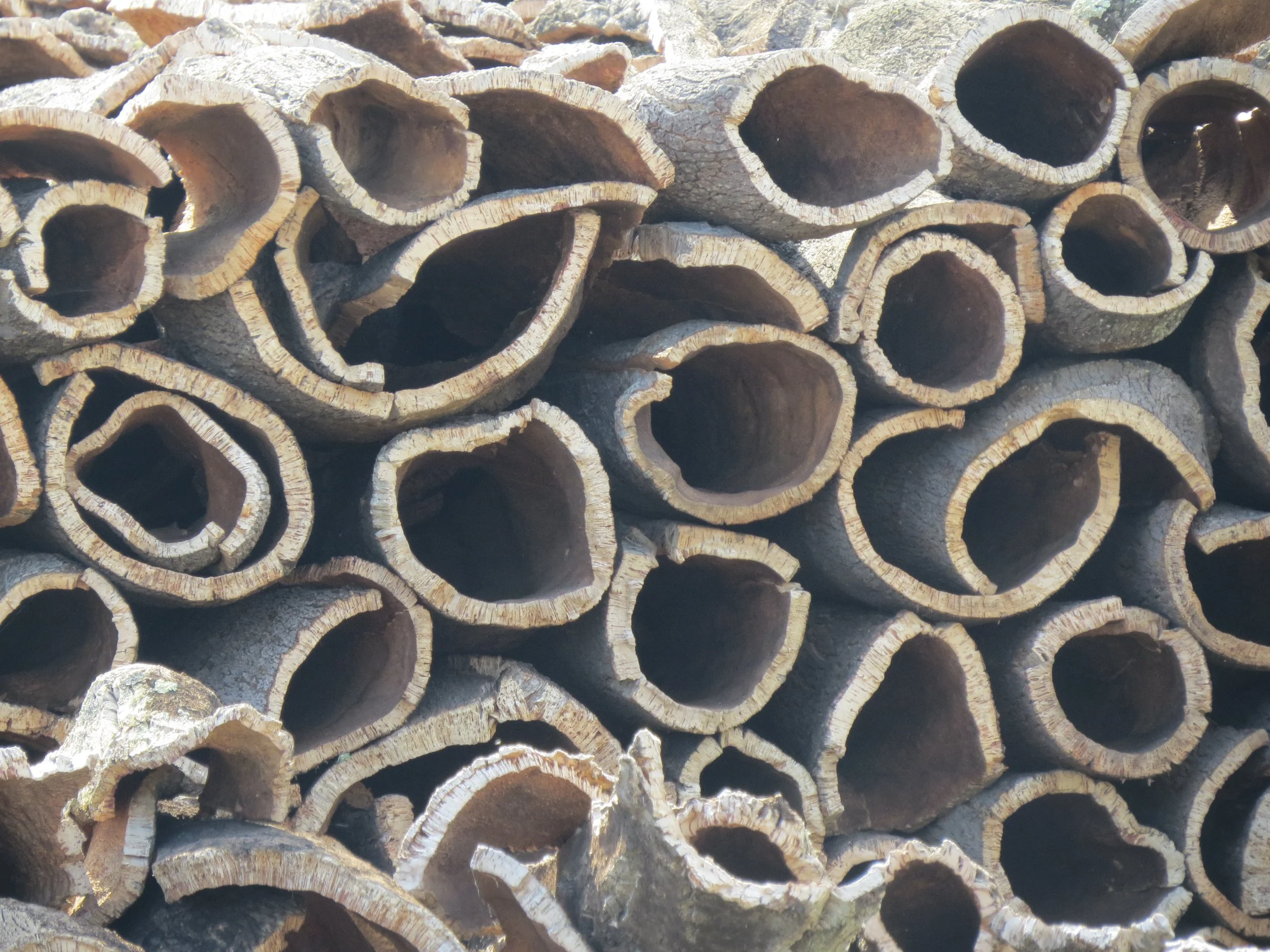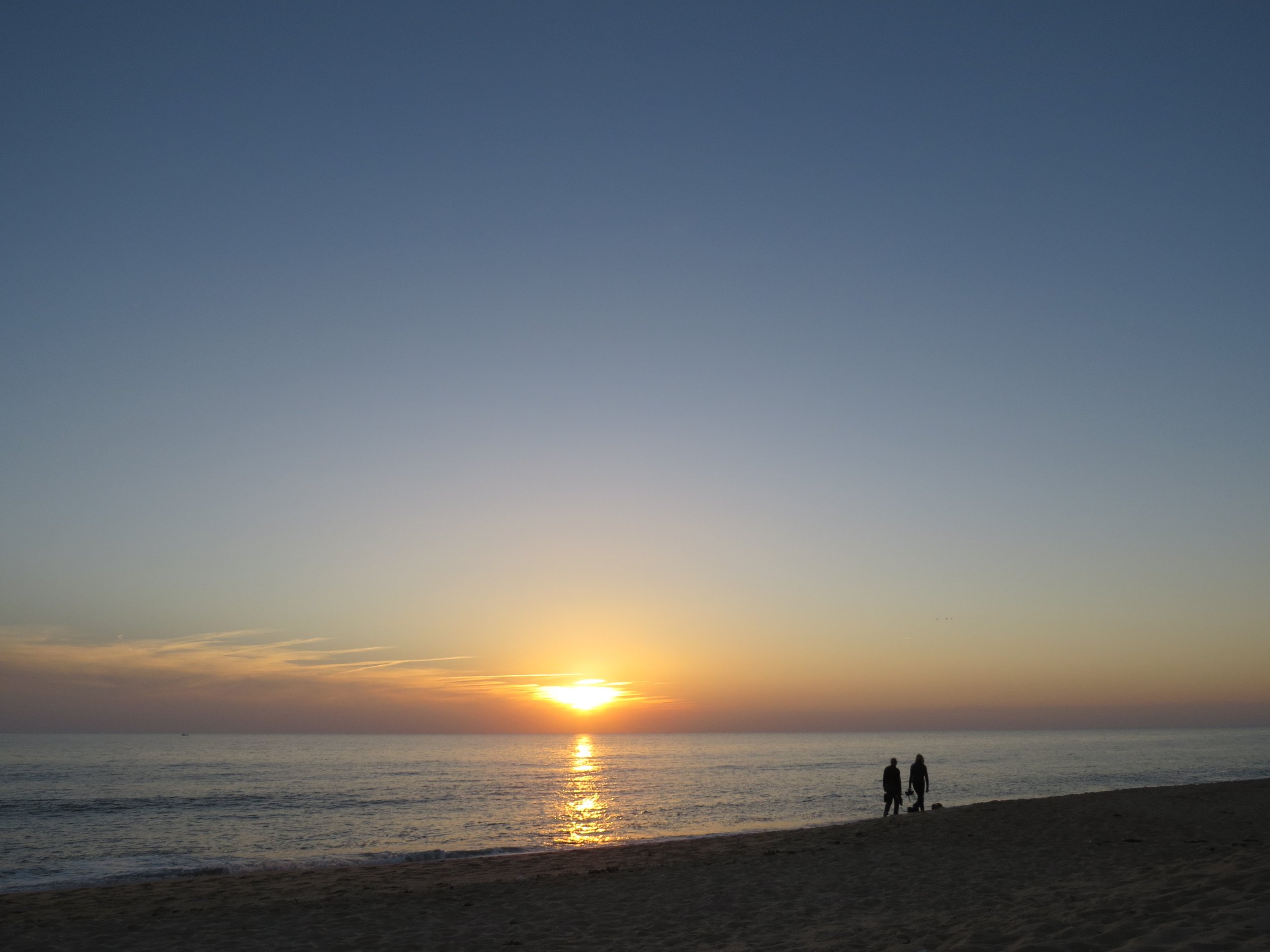Three days in Portugal…
… is absolutely not nearly enough!
But we wanted a little taste, hoping to get a small impression of what Portugal was like.
We entered Portugal from the city of Badajoz, Spain. With our rental car we drove the A6 highway, a toll highway, to get from the eastern boundary almost to the west coast of Portugal quickly. The road was deserted despite the fact that this was a holiday. At regular intervals along these toll roads, are rest areas with a gas station, store, restaurant and sometimes even a picnic site. We were able to buy a good Michelin map as soon as we drove into Portugal. The toll roads in Portugal had a ticket booth and a place to pay at the point of exit. But some toll roads only have photo sites so we expect to get the bill when we drop off our rental car. But the total toll to drive from east to west in Portugal was 13.50 euros and the roads are beautifully paved, smooth highways.
Once we reached the western side of Portugal we got off the main road quickly and found bumpy back roads full of potholes. Bumpy but more fun. We followed the coast south as much as possible but did not really get to see the shore since the roads run more inland. We did spot the occasional, iconic Portuguese windmill!
We loved the small villages with white stucco houses like a child’s drawing. Each had a red tiled roof, and often a blue band painted around the base and windows. Signs on houses and street names were almost exclusively made of painted tiles.
The Portuguese language looks quite similar to Spanish in writing, with some words even easier to decipher. But as soon as people started speaking, it sounded completely, different. First we thought that the waitress must be Romanian because of the harsh, more guttural sounds. Then we figured the other people in the restaurant must be her family and speak the same, eastern European language. Until we finally figured out that everybody spoke that way and it must be Portuguese!
Because the roads did not hug the coast, and because we wanted to see the Atlantic shore of Portugal, we decided to drive to the western most point on the southern coast: Sines. We hoped for a glorious coastline. And the natural coast line was, indeed, rugged with rocks and low shrubs. But Sines was a large city with oil refineries, its port clogged with oil tankers. All we did is walk along the path by the shore, get back in the car and circumnavigate south again. We had high hopes for Faro, on the south coast.
Cork tree
The most fascinating thing we saw, besides the white washed villages and friendly people along the way, was the huge number of cork trees.
Next time you pop that cork from your favorite bottle, think about where it came from. Portugal produces about half of the world’s commercial cork. Cork is the most important Portuguese export product. Cork comes from the bark of the cork tree.
Wikipedia says:
Cork
“Cork is extracted only from early May to late August, when the cork can be separated from the tree without causing permanent damage. When the tree reaches 25–30 years of age and about 24in (60 cm) in circumference, the cork can be removed for the first time. However, this first harvest almost always produces poor quality cork. Bark from initial harvests can be used to make flooring, shoes, insulation and other industrial products. Subsequent extractions usually occur at intervals of 9 years, though it can take up to 13 for the cork to reach an acceptable size.”
We noticed huge orchards of cork trees, many with shiny dark red trunks of which the cork had recently been removed and piled for shipment to some of the 500 cork factories in Portugal, employing over 20,000 people.
We continued to follow small winding roads south until we reached the southern coast at the city of Lagos. From there we continued east hugging the shore as much as possible, avoiding big cities and high rises - until we reached Faro. Any hopes of a quaint Portuguese fishing villages were dashed when we saw the towering high rises. However, it turned out that we had booked the perfect place to spend a few nights on the coast: a small AirBnB apartment on Praia de Faro: a long strip of beach full of low beach bungalows and apartments, surf shops and hippy cafe’s. We had a view of the Atlantic ocean and enjoyed walking the length of the peninsula. We also enjoyed a Portuguese dinner of langostinos smothered in garlic butter. Accompanied by a fine bottle of Portuguese wine.
After leaving the Faro area, we again took all the small back roads we could find, staying close to the coast. This way we came across Praia do Barril and the tiny town of Predras del Rei with a lovely white bungalow park - a place we might just return to some day. Here we walked the long path through a nature reserve - spotting an exciting hoopoe bird, a kind of woodpecker.
Predras del Rei
After another long walk on an endless white sand beach, we drove the last few kilometres in Portugal to, once again, reach Spain. Now we know that, next time, we would like to explore all the rest of Portugal - including Lisbon!
RESOURCES:
• info on toll roads: https://www.portugalist.com/portugal-toll-roads/
• Faro AirBnB: https://www.airbnb.ca/rooms/5671973?source_impression_id=p3_1663550501_sHyjmco%2BzU6%2BQDb0
